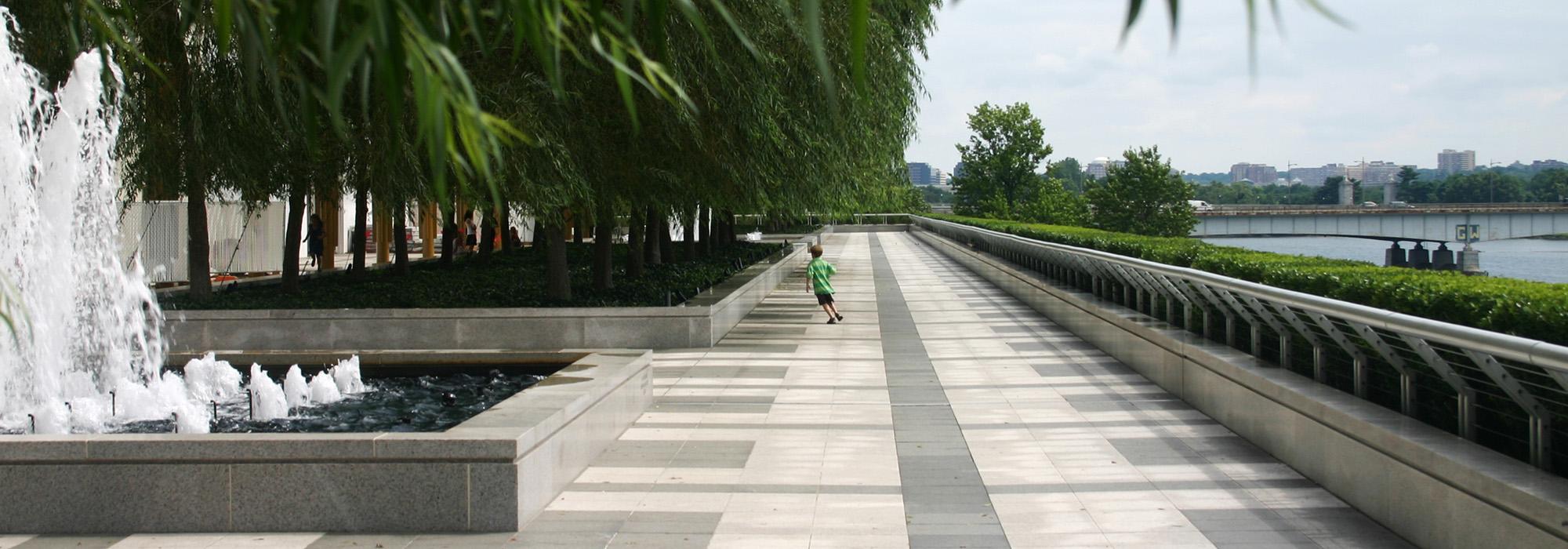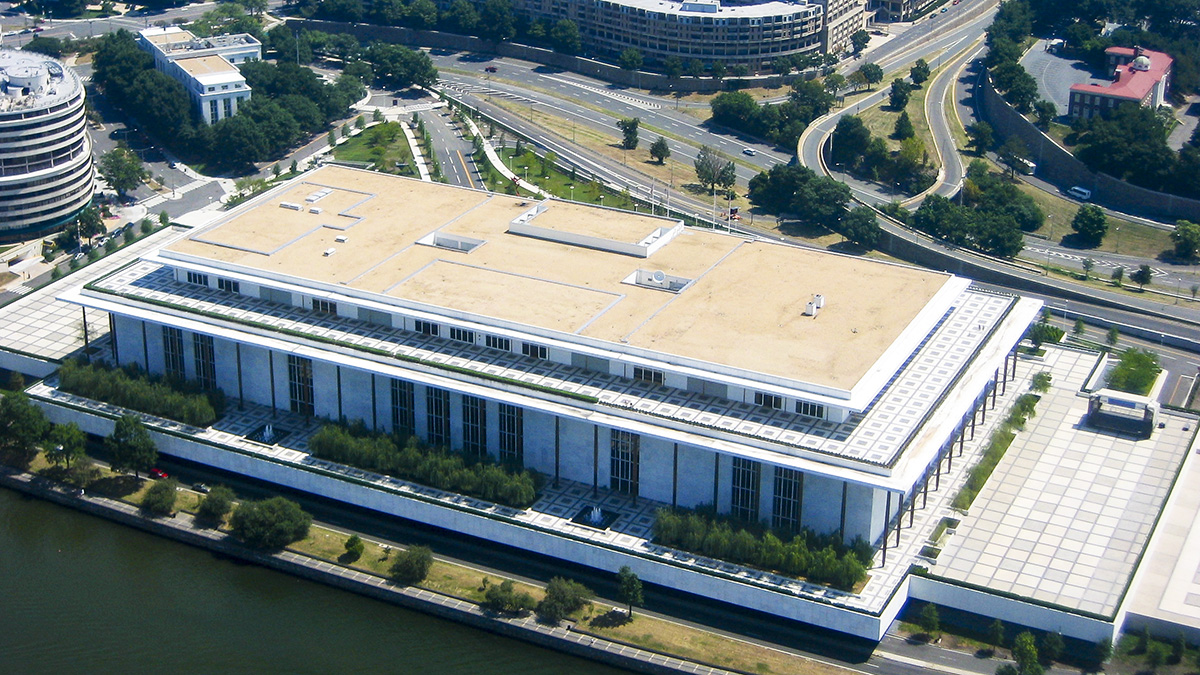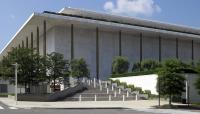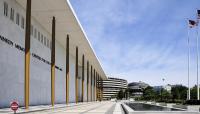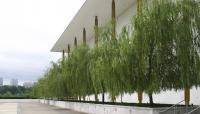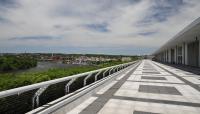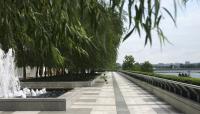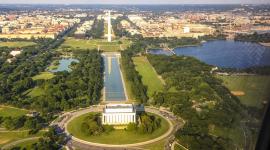Landscape Information
The idea for a national cultural center was first introduced by Eleanor Roosevelt in 1933. Following the passage of the National Cultural Center Act in 1958, Edward Durrell Stone was appointed as the architect while his son, Edward Durrell Stone, Jr., served as landscape architect along with consulting landscape architects Sasaki, Walker and Associates. Stone, Jr.’s planting plan, developed circa 1965, featured a dense mix of red oaks, flowering crab apples, red maples, and willows. The center opened in 1971 as the John F. Kennedy Memorial Center for the Performing Arts.
Situated on the banks of the Potomac River, the 630-foot-long Modernist structure is sheeted in Carrara marble and is surrounded by a wide colonnade of thin gold-colored columns. Open-air porches project out onto wide plaza wings. An entrance plaza is framed by parallel groves that shoulder a central 110-foot-long reflecting pool. Public artworks located at the entrance include the sculptures Don Quixote by Aurelio Teno and From Columbia to John F. Kennedy by Eduardo Ramirez Vallamizar. Overlooking the Potomac River, the south and west terraces contain rows of willow trees set in raised planter boxes interspersed with square fountains. Repetitive geometric floor tiles and planted terrace podiums, designed by landscape architect Lester Collins in 1971, visually connect the entrance, and south and west terraces to the penthouse roof terrace.
In 2019 the campus expanded southward from an existing terrace onto an artificial slope constructed above new performance spaces. Designed by Steven Holl Architects and landscape architect Edmund Hollander, the sloping lawn, which doubles as a green roof, features a mahogany deck shaped to the dimensions of Kennedy’s WWII vessel, the PT 109, and a reflecting pool. Three angular pavilions connect to the rehearsal complex below. At the southern edge, a grove of 35 ginkgo trees were planted in honor of the 35th president. A pedestrian bridge connects the addition to the Potomac waterfront, spanning both Rock Creek and Potomac Parkways.



